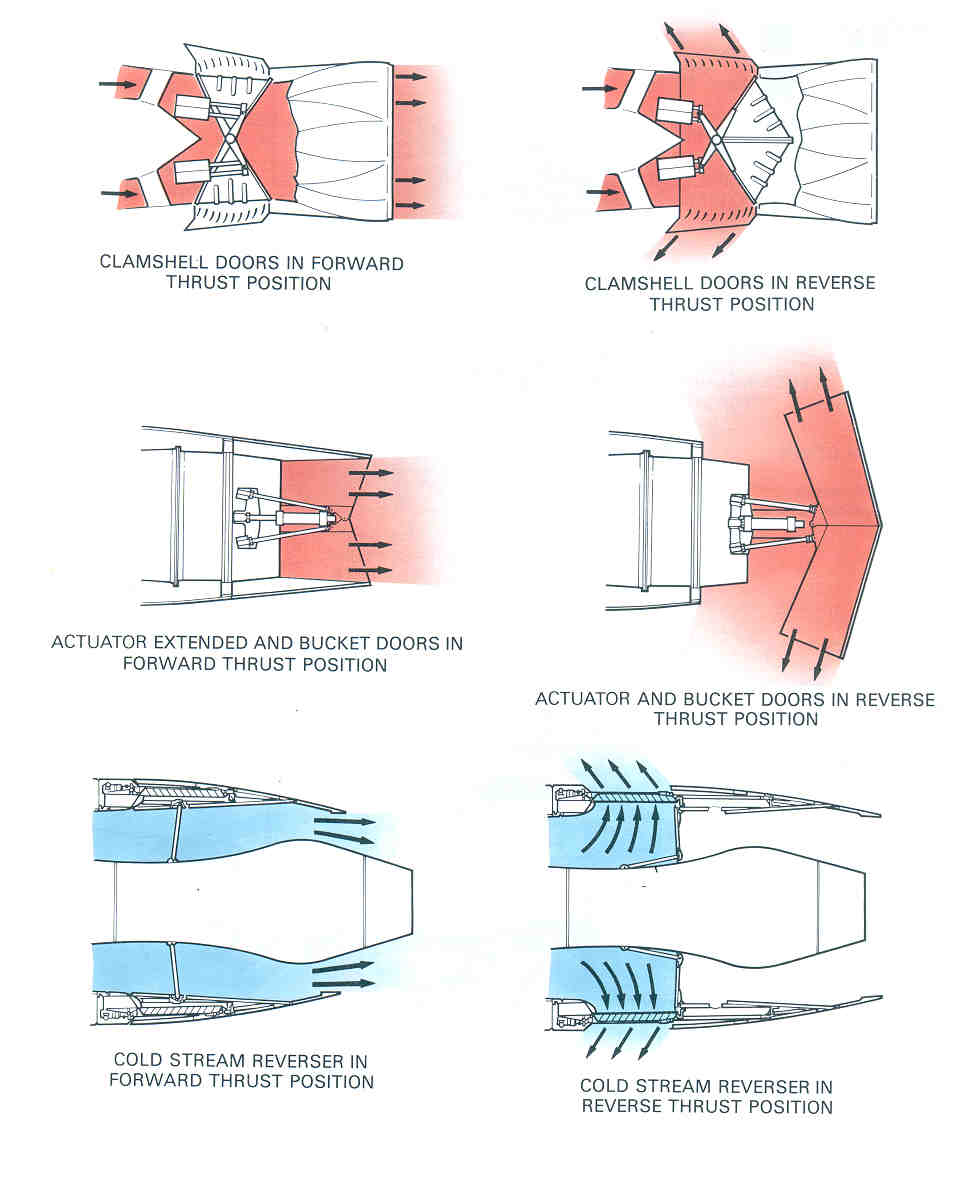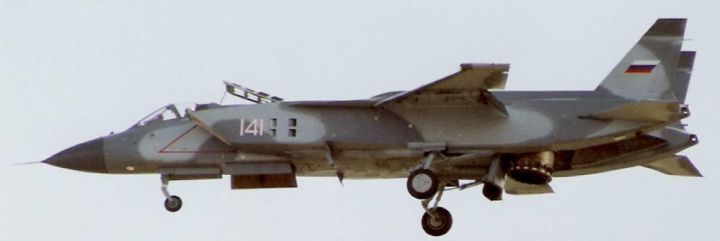We’re back after a quick hiatus. I’ll be honest, I wasn’t sure how long it would be before I uploaded this part. And at one point was seriously scrapping the series because there was something I hadn’t considered. People might choose to write articles on the same subject as something I was working on, release it before me and essentially make all my hard work for nothing. But after having therapy time with EternalDarkness, I decided to just put it on the backburner for a week or two and heavily modify it before publishing.
Also, to clarify, when I say thrust vectoring, I mean an aircraft’s ability to manipulate the direction of thrust.
Background
So, you’ve got thrust to power your aircraft. But what if you see a brick wall appear in your way and need to slow down quickly? Or maybe you want to give the middle finger to physics and fly backwards? Or perhaps you’ve purchased a plane, but suddenly decide you actually wanted a helicopter instead.
Believe it or not, vectoring thrust is a very common thing. Not just on aircraft, but other modes of transport too. Said inferior transport types include boats with an outboard motor, hovercrafts and your bedroom pedestal fan… Although I generally advise using the latter as a mode of transport.

Squirrel Bedroom Desk Reveal
Anyway, you get the picture. Thrust vectoring is literally everywhere.
Reverse Thrust
I’m going to start with the most boring type of thrust vectoring. Reverse Thrust.
Scenario Time. You’re coming into land on a very long runway. You’re pretty relaxed about the whole situation as there’s ample room to come to a stop. But then you see it. Two men carrying a large sheet of glass across the runway. What do you do? Well, for a start fire Air Traffic Control for doing a god-awful job. But, most importantly, hit the reverse thrust lever.
Basically, reverse thrust is a great way of coming to a stop very quickly, which is why you’ll find a lot of airliners employing this method of braking. Also, fun fact, the reverse thrust system utilises what they call a “weight on wheels switch” to prevent accidental operation in the air, meaning reverse thrust can only be deployed when the wheels are on the ground.
There are many different ways of deflecting thrust in the opposite direction. And the 3 main types are depicted in the illustration below:

The Three Main Types of Reverse Thrust Mechanisms
V/STOL (Vertical/Short Take Off and Landing)
I’m going to break this section off into subheadings because there’s quite a bit of ground to cover.
Background
VTOL is what happens when a plane wants to sometimes identify as a helicopter. It’s a useful function, especially in areas that don’t have forgiving terrain. However, it is very important to note that VTOL isn’t on its own an engine type. It’s a system and by that, I mean if you were in forward flight and all the VTOL components of your engine either stopped working or casually fell off, you aircraft would likely be fine until you get to the landing site and find out it’s a helipad. Mistakes were made or challenge accepted are the only two outlooks one would have in that scenario.
So how do you get a plane to jump up and down with joy without dropping it from a crane onto a trampoline? Well you have to counteract the aircraft’s weight/mass. If your aircraft weight 1 kilogram, then you need a force that exceeds 1 kilogram in order to lift it up.
Tiltrotor/Tiltwing
This is arguably, in theory, the easiest way of achieving VTOL through thrust vectoring. You’re not really adding any additional engines. You’re essentially taking a helicopter and a prop plane and taking them to the Pokémon breeding centre.
As ever with most cool aerospace designs, it had its origins in World War II in the form of the Tilt Rotor Focke-Achgelis Fa 269. Unfortunately, the design never really made it passed the mock-up phase before being bombed out of existence.
A Small Focke-Achgelis Fa 269 Model
Enter the American company Bell, which the proceeded to milk the Tilt Rotor designs from 1955 for all they’re worth. Coincidently, they mainly specialise in helicopters. They came up with designs for the XV-3, XV-15, the iconic V-22 Osprey and its successor, the V-280 Valor.

The V-280 Valor
Tilt Wing designs don’t really get much love though, with the most famous probably being the LTV XC-142, which doesn’t really have the same ring to it as V-22. However, while initially more complex in it’s design, the tiltwing does actually offer some notable advantages over the tiltrotor:
- Less downforce is dispersed by the wing (some of the downforce on a Tilt Rotor strikes the wing, making it less efficient).
- Because the wing moves, the wings higher angle of attack in transition from vertical to forward flight generates more lift, thus decreasing stall speed and just overall making the transition a more pleasant experience.

The LTV XC-142
Tilt Jet
Tilt Jets are the unwanted child between true thrust vectoring nozzle jets and tilt rotors. There’s not really a whole lot to say about them apart from they would be your go-to choice if you wanted to use a tilt-rotor-like mechanism, but for an aircraft you wanted to go supersonic… You’ll never guess which company almost got their hands on a Tilt Jet.

Bell XF-109 concept
VTOL Thrust Vectoring Nozzles
Of course, as a UK resident, I now have to pay mandatory respect to our lord and saviour, the Hawker Siddeley Harrier. There are many ways one can vector thrust from horizontal to vertical using nozzles. The most notable for me is of course the nozzles on the Rolls-Royce Pegasus engine.
The Rolls-Royce Pegasus engine is a turbofan. For those that read my article on axial flow turbines you’ll know that the turbofan can have different compressor stages. For the first set of nozzles at the front, the air is taken from the Low-Pressure compressor stage, with the exhaust air being expelled from the rear nozzles.

Harrier Jump Jet
Of course, the Harrier isn’t the only aircraft that employs this method of VTOL. The happiest aircraft on the planet also uses a similar mechanism. Introducing, the X-32:

The Cure for Depression
The X-32 uses a similar concept to the Harrier, but it was more refined and was able to utilise an afterburner (unlike the Harrier). Unfortunately, the US government decided to change the Joint Strike Fighter Specifications after the prototype was made, giving the yet to be unveiled X-35 the edge, giving Lockheed chance to update their aircraft. This effectively penalised the X-32, which led to it losing to the X-35 (later F-35).

X-32 Production Mock-up (to the new specifications set by the government)
I don’t know about you guys but I’m pretty sour about that outcome (not that the F-35 is a bad plane, I just think it was very unfair). Speaking of the F-35:
The YAK -141 utilises a very unique nozzle design:

YAK-141 in VTOL Configuration
If that configuration seems familiar, it’s because it’s almost identical to that used on the F-35B. At least the nozzle design is (a lift fan is used on the F-35 in place of the 2 small jet engines on the YAK-141). It’s quite fun to watch though:

F-35B Nozzle Movement
2D and 3D Thrust Vectoring
So, you’ve got a plane. It’s a great design, but the laws of physics tell your plane “no” every time it wants to do a cool stunt. So, what do you do?
Slap some thrust vectoring nozzles on. This modification alone will make physics cry in the corner of your room and tell you to not talk to it.
Thrust vectoring comes in 2 flavours. F-22 and Vodka. F-22 is the 2D kind and allows your plane to do basic mouth dropping manoeuvres like this:

F-22 Putting Gymnasts to Shame
The Second variety of thrust vectoring is 3D. It’s basically extreme mode for pilots. While 2D thrust vectoring allows for thrust vectoring along the pitch axis (or if you’re weird maybe you make an engine that only does the roll or yaw axis), 3D thrust vectoring allows for vectoring simultaneously along the pitch, roll and yaw axis. Honestly, for this reason alone, I want to go to Russia:

The SU-35 Putting the F-22 to Shame
3D Thurst vectoring may look like a bit of a gimmick, but it can have a lot of useful features, such as rapidly reducing speed (to get behind an enemy), providing short take off capability, providing additional features for out turning an enemy jet (again, meaning you can get behind them faster) , retaining control at high altitudes, and of course, retaining agility at low speeds, which is important if you accidentally use up all your forward “energy” (ironically sometimes caused by using thrust vectoring).
There’s a bit of debate over whether thrust vectoring is relevant in the modern era of fighter jets, with it largely coming down to how optimistic you are about missile/radar technology and which aircraft you’re fighting against. But I think we can all agree it makes for a fantastic show. Plus, if we’re still giving fighter aircraft guns, why not give them moving nozzles too?
Conclusion
Thrust vectoring is everywhere and it’s here to stay. It provides up with useful properties to play with, from VTOL to defying gravity and allowing aircraft to brake harder and faster. It’s an essential in both the military and commercial markets and without it, life would be a little bit less fun.
Next Time
I may or may not make Tully very happy.
Next Post: Engine Types: Part 5 (Wankel Engines)
Previous Post: (Engine Types: Part 3 (Types of Jet Engine)

Also
My condolences.
I forsake NCD:
3D thrust vectoring isn't gonna let Russia win, hell no, but god damn it is cool and I want to see more aircraft with it.
C'mon MIC. I want my KSP plane with 16 panther turbofans to be real.
You have a camass humor, I'm following. (If someone cared..)
Yo, I may be late but,
Can I get the link for the SU 35 putting the F22 to shame?
Btw the SU-35, there's a guy who just do exactly that movement in i think 1967 in an F-4U Phantom, the plane were rolling to the right and then in a split of second roll to the left, yaw to the right and full pitch which makes the plane uncontrollable for couple second and then regain control
Why does the Squirrel know this useful information?
F-22:Can you do this ?
Su-35: Hold my nozzle
@Squirrel good to see your still alive old boy
its only the f-35b that has the vstol capabilities the f-35a is used by the air force and the f-35c is the catobar (catapult assisted takeoff but arrested recovery) version @Squirrel
@Squirrel (OxO).
@Mmdben for example, take the V-280, the engines on that stay static in comparison to the rotors. Fuel doesn't need to reach the rotors and thus very little if any change to the fuel system is needed.
.
However, I appreciate it's a pretty new design and is radically different in approach to the V-22 Osprey, where the engines also rotate. I can perhaps see the need to an additional pump or two as well as perhaps some modification to the fuel lines to allow for rotation. But it's a far cry from having to modify an engine fuel system by either pressurising the fuel tanks or adding additional fuel lines/valves to prevent air being drawn into the system while the wing is rotating.
@Mmdben the fuel system doesnt need to account for change of angle. And even if it does, it would would be nowhere near the scale of that of a tilt wing. Although, tilt synchronization would be needed, it's not a difficult thing to achieve and wouldn't require the redesign of an entire system to implement, like the fuel system in a tilt wing.
.
I agree nothing is simple when your dive into the details. But there's one thing following that logic and another appearing on someone's post and telling them you think they're wrong.
.
To be clear, I don't personally have any issues here, there's nothing wrong with a healthy debate. But, I will respond accordingly if someone tries to start a debate on my post.
@Squirrel laughs in:-
- Blade movement synchronization mechanisms on Tilitprops.
- Fuel system needs to account for changes in engine mount angle too.
..
..
Let's agree on leaving this topic saying that nothing is simple if you break it apart,even the simplest things in life,like eating,Gravity,consciousness......etc.
@Mmdben I think the argument for tilt wing design being more complex is justified.
.
Tilt wing is more complex because:
- fuel system needs to account for change in wing angle.
- has to be designed so prop wash over the wings is included to prevent stalling
- you're tilting the whole wing. The mechanism needs to be able to compensate for the extra weight as well as how the wing interacts with the fuselage when tilting.
.
By contrast, you don't really need to do any of that with tilt rotor.
@Mmdben
1. I stated This is arguably, in theory, the easiest way of achieving VTOL through thrust vectoring. But If I wanted to be petty about it, either a standard helicopter or an avrocar would be the easiest way of, in theory, achieving VTOL. But again, I was talking about thrust vectoring and didn't feel the need to include them as their thrust vectoring capability is negligible at best. I nearly included the avrocar because of it's control system, but decided against it as it wouldn't add much to the article and in principle its very similar to 3D thrust vectoring.
2. I think I had that in my original article. But I dumbed it down severely after you published yours so I could fit in all the other stuff without the article becoming too tedious to read. I'll be honest, this article isn't my greatest work. It was originally on par with my previous stuff, but now it's a bit of a Frankenstein's monster. Not my best work.
3. Fixed it.
4. I was talking about thrust vectoring, with less emphasis on VTOL which is why I included it.
5. No. The original Word document was overwritten by this one.
about the transition experience being more pleasant I'l just copy paste the biggest disadvantage of this configuration "during transition from hover to forward flight, the wing reaches very high angles of attack and will stall. This can be controlled by submerging the entire wing in propwash( Propwash:-The disturbed mass of air pushed aft (or fore when in reverse) by the propeller of an aircraft ) and running the engine at a high power setting".
And this too"and don't forget that the whole wing is a offering a very big surface for the air Minimizing hover control"
I’ve seen a F-22 IRL, it was jaw dropping
@Tully2001 but what about the joke you made with he word "pathetic"
Wait did have an argument with Tully2001 so you can dissapoint him?
@Squirrel yes i love your new "Desk Fan"
@Squirrel what about a 3D thrust vectoring Passenger Plane?
Ah, another user like me, who wants 3D thrust vectoring on jets or move to Russia.
Like seriously, the benefits of having 3D thrust vectoring is just too high. Imagine a MANTA - or any tailless fighter - with just 2D thrust vectoring, with no help for yaw. It’d flip itself around like crazy.
Conclusion: modern tailless fighters need 3D TVC.
@Randomdoggo I glossed over them briefly in types of jet engine. I feel like the concept of them was too similar to that of a turboprop though, so I didn't go into a lot of detail. The only major difference is the inclusion of a swash plate and the components that compliment it and those aren't turbo shaft specific as they're used on reciprocating engine powered helicopters too.
You should do anti-gravity engines next